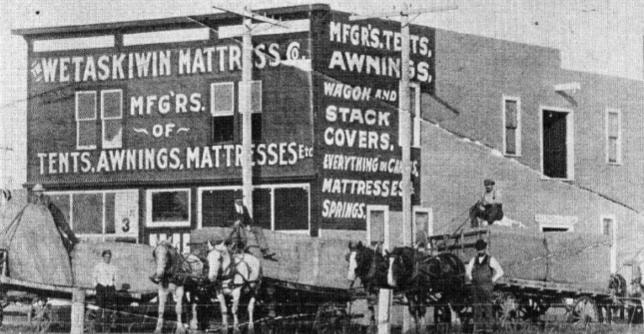When we look at the past, we often look at the successes in a small town. It can be easy to talk about the businesses that lasted for fifty years, or changed the area forever. In truth, there were many businesses that did not succeed and this week I am looking at one of those failures.
In 1907, one of the first industries started in Wetaskiwin was a factory to manufacturer mattresses, tents and awnings. Owned by W. Beam, the business grew and became one of the largest of its kind in the western provinces. In addition to making those items, it also made iron beds, iron mouldings, car wheels and many other items used by residents in the area.
It had originally began as a business in a one room building with a sewing machine but it soon expanded until it was a business housed in a building that covered two acres of land, using modern machinery. Inside the building were a pattern room, machine shop, enameling room and an up-to-date foundry. There were various departments within the building that handled everything from the harvesting of the materials, to the eventual end product.
In order to stay on top of things, the business began to spend thousands of dollars to experiment with new products and forms of promotion. With the excellent quality of the end product, the business began to expand its trading area across Western Canada.
In 1911, the business became The Wetaskiwin Tent and Mattress Company and in 1912 it completed a new design of an iron bed. The bed was made to be elegant in appearance but priced so that the average person could afford it.
This would be the high point for the business and it soon found that times were getting tough. The company went to council and asked for property and tax concessions but council stated this would not happen.
Soon after, the factory folded and the employees were laid off.
To add insult to injury, a fire later destroyed the entire building, reducing this business and its history to dust.
That being said, for four years, it was one of the most important businesses in the entire area.
— Craig Baird
I put out a history magazine that highlights many aspects of Canadian history. It is free and is delivered to your inbox. E-mail me to subscribe at craig@canadaehx.com
